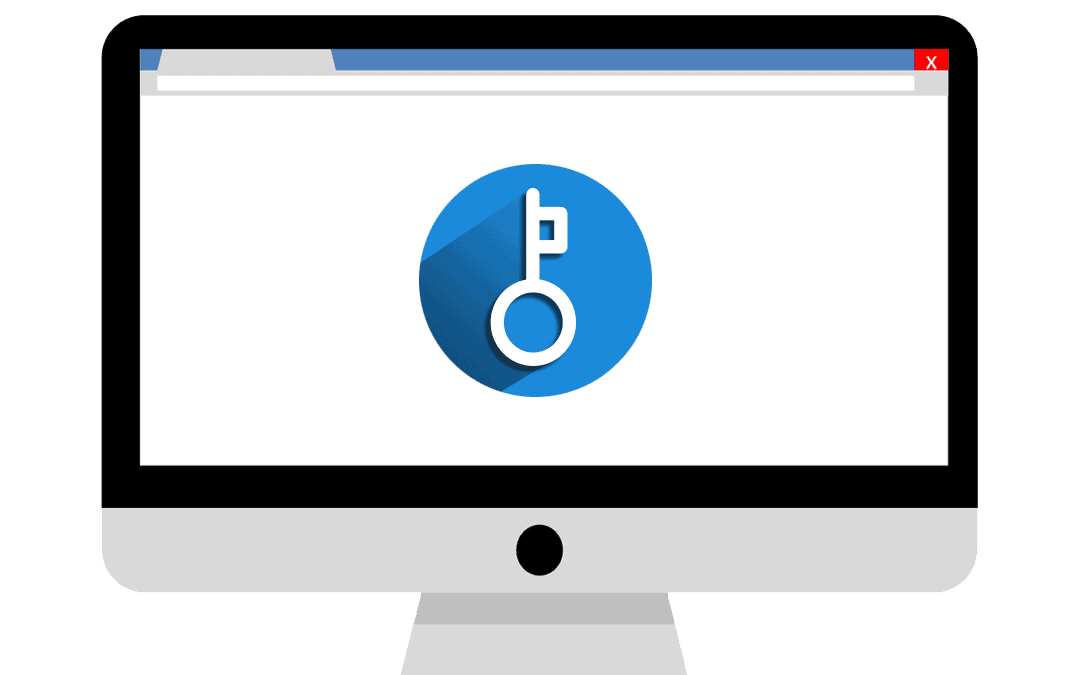Learn all about the Profit First Method and how it can help you with cash flow management among many other benefits.
Based on Mike Michalowicz’s bestselling book: Profit First, The Profit First framework is time-tested cash management strategy to make your business more profitable than it has ever been.
In this post, we’re going to share more details, including:
- What’s the Profit First Philosophy?
- What are the main benefits?
- How it can help you tackle some common business challenges
- How to implement it
- Who shouldn’t use the Profit First system?
Article Contents
What’s the Profit First Philosophy?
The Profit First Formula is Sales - Profit = Expenses Share on XIn order to understand Profit First, you need to first understand the core business concepts of revenue, profit, and cash flow.
This ties back to the timeless accounting formula for a Profit and Loss statement, which is:
Sales – Expenses = Profit
The Profit First philosophy challenges this formula by putting a greater focus on PROFIT.
So, the Profit First formula becomes:
Sales – Profit = Expenses
You are taking the profit first.
The Profit First Mission is to empower entrepreneurs with a simple cash flow blueprint that brings clarity and control over their business finances.
It is a system for helping build your business in a sustainable way that sets you up for long term success.
The philosophy is anchored around a simple idea:
Imagine you have five dinner plates. One plate for revenue, another for taxes, another for owner’s pay, another for operating expenses, and the 5th plate for profit. You set aside funds for your profit, taxes, and owner’s pay – and what’s leftover is what the company has to spend on your operating expenses.

Pro Tip: This is based on Parkinson’s Law, where: work expands to fill the time available to complete. If we are given a whole week to complete a report – it will take that week. But, if we are given just ONE day to complete it, then it will be done in this reduced timeframe with the same quality of work (or sometimes better!).
By taking your profit first, it forces you to think smarter, be more resourceful, and innovate more. You (and your team) will be more productive. You’ll also eliminate unnecessary expenses, which will bring more health to your business than you can ever imagine. In essence, doing more with less.
What are the main benefits?
Profit First is a behavioral framework meaning you don’t have to change your existing habits. Share on X
Profit First is a behavioral framework meaning you don’t have to change your existing habits. If you are anything like me, you see the cash in your bank account. You spend the cash that’s available to you.
Profit First allows you to harness your natural tendencies of doing bank balance accounting but in a more productive way. You are going to use the powerful force of “out of sight, out of mind.”
As you generate a profit, you are going to remove the money from your immediate access. You won’t see it, so you won’t access it.
Pro Tip: The reverse engineering component of taking your profit first bakes this into your business and ensures you grow profitably and find the right size of business naturally.
This framework gives you visibility over your progress towards your goals, resulting in a more profitable company and cold hard cash in your bank account. This motivates you to keep working at it.
Plus, it is a super simple system once implemented. You don’t need to be a “numbers guy or girl” to get it.
How this framework can help you tackle common business challenges?
Simply put, this system works. We’ve been using this system for a while.
It can be used to tackle many common problems that business owners face, including:
- Owners paying themselves properly while still making a profit
- Putting away enough for tax (Tax Office payment plans suck!)
- Paying down and eliminating debt (including reliance on credit cards)
- Giving you control and clarity about what expenses you can commit to in the future (new employees, big asset purchases)
- Remove any unnecessary expenses (Forgotten, recurring SaaS subscriptions anyone?)
- Improving your sales margins (i.e. Get paid a fair amount for your effort!)
Most importantly, we want to help more small businesses be successful, more profitable, and enable them to beat the five-year hurdle.
The cash management system & framework

Profit First is based on a waterfall system where all income flows into your top income account, and then on the 10th and 25th of every month, this cash is allocated out to the other accounts – based on your current allocation percentages.
Here are the five foundational accounts you need to set up are below. These are our multiple ‘smaller plates.’
- INCOME: All revenue comes into this bank account. It acts as your serving tray.
- PROFIT: Start small with your % goal, and build slowly.
- OWNER’S COMP: Owner(s) salary
- TAX: For business tax requirements. This level will depend on how profitable you are and what country you are based in.
- OPEX: What is left after the above allocations – we have to spend on operating expenses.
You’ll want to set up two accounts at a separate external bank other than the bank you use for the others.
- PROFIT HOLD account. hold profit allocations out of sight before your quarterly distributions
- TAX HOLD account: hold money owed to the government out of sight prior to payment.
Set them up with the ability to withdraw money directly from the respective checking accounts at your primary bank.
Pro Tip: Some people find this overwhelming and JUST set up a separate account for profit. Others might also add one for Tax. More advanced Profit First techniques use other accounts depending on the business.
Once you have your bank accounts set up, it is time to implement the Profit First system. This is a three-step process.
1. Determine your Allocation Percentages:
Your Current Allocation Percentages: are based on what you are currently spending in each of these foundational areas (Profit, Owners Comp, Tax, and Operating Expenses). These percentages are based on your revenue.
Then, compare your numbers with the target allocation percentages for a similar ‘healthy’ business with your revenue levels.
See the table below with some general targets based on various revenue levels. Note: This is only a general guide.
2. Calculate your revenue for the period (in the INCOME account) and transfer to the PROFIT, OWNERS COMP, TAX, and OPEX accounts.
These amounts are based on your current allocation percentages. This semi-monthly rhythm is ideal as it enables a fortnightly AP schedule where you can pay all bills from your OPEX once allocations are made.
The profit and tax amounts are transferred across to their HOLD accounts in the separate bank to get them out sight
At the end of the quarter:
At the end of the quarter, 50% of whatever is in the PROFIT account goes to the owner(s) as a reward. The other half should go to a long term storage account to build some capital reserves.
Pro Tip: If you have any debt, we recommend taking 1% as distribution and using the remaining 99% to pay down these debts.
What are some challenges you can run into when implementing this framework?
Some common challenges we have found with people trying to implementing this system themselves:
- You get your initial current allocation percentages WRONG, which gives you the incorrect starting point. You started from the wrong place, so how do you know where you are heading?
- You go crazy on the expense cutting. Saving money everywhere, but then realise the business performance starts to suffer. There needs to be measured analysis around each cost, ensuring each dollar spent is helping you deliver your product or service more efficiently & effectively. There is still plenty of room to negotiate with suppliers or look for better deals without affecting the quality of your output.
- You can’t’ work out how to manage payroll, inventory, or large asset payments AND use this system without running out of cash in your account. There are techniques to help with this (Get the timing correct when you make allocations and then pay expenses, track your inventory payments separately, create a vault for emergency capital reserves etc).
- You don’t properly build the habit and actually live these new principles. You start stealing from other accounts because your % ‘s are incorrect and then lose faith in it all. This is very common. The excitement post book is awesome, but then drops off and old habits take over.
- When your income drops, and have less cash to meet your expenses, you revert back to that addictive credit card. We understand the need for short term finance but there are ways to remove these ridiculously expensive interest charges from your life.
- You have been including Sales Tax or GST in your Income account, which has overstated your revenue figures! We strip this out before it ever gets to the allocation stage. That’s why we are after your REAL revenue.
- You can’t work out if you can hire a new employee? We can help you work out a budget for your labour and track it’s productivity. Real Revenue should generally be X2.5 the total labor cost (if using highly skilled people), and X4 times if using cheaper staff. For e.g A company using cheaper offshore VA’s for staff with real revenue of $400,000, has a budget for Staff of $100,000.
- You are making a loss, so there is no profit to allocate! We can help you turn the business around and get back into a lean mean profitable machine.
Who shouldn’t use the Profit First system?
While we’re big believers in the Profit First system, this isn’t for everyone. If your business falls in one of these buckets, then you might be better suited to another method.
- You are not coachable and struggle with following through with new habits. The Profit First system is simple once it is set up. However, some people struggle with these changes. The power of this system is its ability to shift your mindset – if you are committed.
- Your Profit goal percentages are too ambitious. You get excited to start taking control of your finances. But, the system breaks, and you run out of cash in your operating expenses account, lose motivation and revert to old habits (or credit card debt!). Go slowly with your goals – we are turning a big ship around here – not a little speed boat.
- You are running a VC-funded startup in hyper-growth mode that’s scaling quickly, and your investors may not agree with the controlled rate of growth that profit first naturally enables. VCs’ main goal is to see growth and the product work at scale with profitability a future dream – not a current reality.
- Your accounting and bookkeeping team is not on board. They may see these additional accounts as extra work during reconciliations and question the system. If you are committed to this system, make sure to work with a Profit First bookkeeper.
- Your current bank wants to charge fees on every new account. This is a common problem, and it’s time to get on the phone and negotiate a better deal!
FAQs
Q: Which Banks are Best?
A: People have had great success with credit unions and community banks. Usually, there are no fees and no balance requirements at credit unions, community banks, and some regional banks.
Pro Tip: Make sure to check if the bank connects to your Xero account via direct feeds.
Q: Do I need to allocate money from income account to Profit, Tax, Owner Comp and Opex on 10th and 25th instead of daily, or as needed?
A: Doing it twice a month establishes a good rhythm, as you will then be making efficient batch payments and training your suppliers when to expect payment. It will also give great visibility over your cash flow trends.
Q: What is real revenue? Is this just total income?
A: The top-line revenue of a business is the total income. It represents all cumulative sales. Real Revenue = Total Income – Cost of materials and subcontractors.
A business should only adjust to Real Revenue for Profit First purpose if a significant portion of the operations requires materials and subcontractors (typically more than 20% of Total Income). This is different from Gross Profit, which = Total Income – COGS, which has a lot more items involved.
Q: Can Profit First be done retroactively?
A: No, allocations can begin the day you start Profit First but no need to do anything retroactively.




